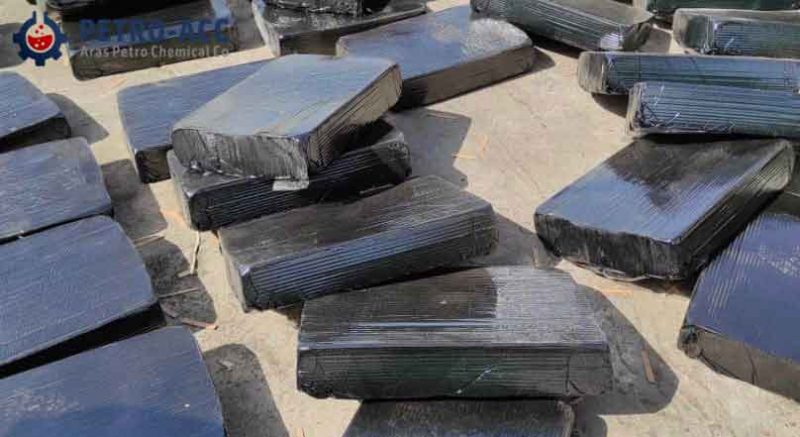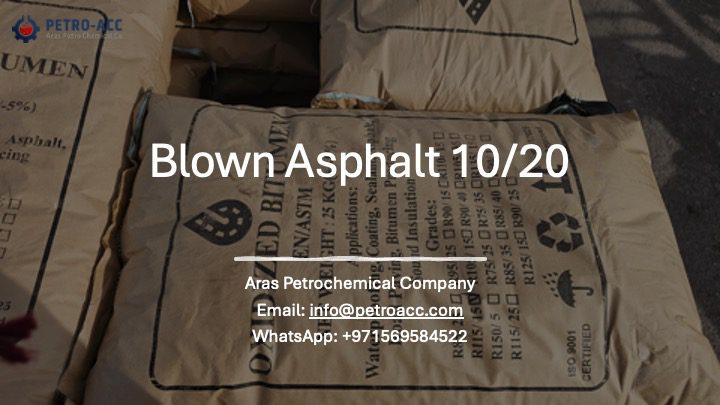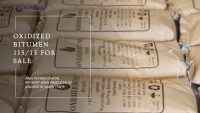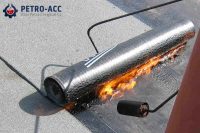Oxidized bitumen is a material derived from crude oil that has been subjected to a controlled reaction with air or oxygen at elevated temperatures. This process causes the bitumen to become more viscous and harder, with improved thermal and aging properties. The degree of oxidation can be varied to produce a range of materials with different properties, such as increased softening point, reduced penetration, and improved resistance to weathering and oxidation. Oxidized bitumen is commonly used in roofing and waterproofing applications, as well as in the manufacturing of various industrial products, such as adhesives, coatings, and sealants.
OXIDIZED BITUMEN USES
Oxidized bitumen, also known as blown bitumen or air-blown bitumen, is a type of bitumen that has been treated with oxygen to make it harder and more durable. It is commonly used in a variety of applications, including:
- Waterproofing: Oxidized bitumen is often used as a waterproofing material for roofs, foundations, and other structures. Its a high viscosity and resistance to water make it an ideal material for preventing leaks and protecting against moisture damage.
- Road surfacing: oxidized asphalt can be used as a binder in the production of asphalt mixtures for road surfacing. It improves the durability and resistance to deformation of the asphalt, making it suitable for high-traffic areas.
- Paints and coatings: The high melting point and thermal stability of oxidized bitumen make it a useful ingredient in the production of industrial coatings, paints, and mastics. It can improve the adhesion, elasticity, and weather resistance of these products.
- Adhesives: The tackiness of oxidized bitumen makes it a useful adhesive in various industries, including automotive, construction, and packaging. It can bond with a wide range of materials, including metals, plastics, and wood.
- Pipe coatings: oxidized asphalt can be applied as a coating to protect pipelines from corrosion and other environmental damage. Its high resistance to chemicals and abrasion makes it an ideal material for this application.
- Electrical products: oxidized asphalt can be used as an insulator in electrical products such as cables and wires. Its high dielectric strength and thermal stability make it an effective barrier against electrical current and heat.
BENEFITS OF USING OXIDIZED BITUMEN
Oxidized bitumen, also known as oxidized asphalt and is a specially treated type of bitumen that offers a range of benefits for various applications. Some of the benefits of using oxidized bitumen include:
- Improved durability: oxidized asphalt is more durable and resistant to weathering, making it ideal for use in applications where exposure to the elements is a concern.
- Increased viscosity: The oxidation process increases the viscosity of bitumen, making it ideal for use in applications that require a more viscous material, such as roofing and sealing.
- Improved waterproofing: The higher viscosity of oxidized bitumen makes it more effective at sealing and waterproofing, making it an ideal choice for roofing applications.
- Higher softening point: The oxidation process also increases the softening point of bitumen, making it more resistant to high temperatures and more suitable for use in hot climates.
- Enhanced adhesion: oxidized asphalt has better adhesion properties than regular bitumen, making it ideal for use in applications where strong adhesion is necessary, such as in pavement construction and maintenance.
- Reduced rutting and deformation: The increased stiffness of oxidized bitumen helps to reduce rutting and deformation in pavement applications, making it an ideal choice for road construction.
Overall, oxidized asphalt offers a range of benefits that make it an ideal choice for various applications, from roofing and waterproofing to pavement construction and maintenance.
OXIDIZED BITUMEN GRADES
The degree of oxidation determines the physical properties of the oxidized asphalt, and various grades are available to meet specific requirements.
Here are some common grades of oxidized bitumen:
- Hard grade: This grade has the highest degree of oxidation and is typically used for industrial applications that require a high level of durability and resistance to weathering.
- Medium grade: This grade has a lower degree of oxidation than the hard grade, and it is often used for waterproofing applications such as sealing roofs and foundations.
- Soft grade: This grade has the lowest degree of oxidation and is used primarily for paving applications, such as surfacing roads and runways.
- Extra hard grade: This grade is similar to the hard grade but has even higher levels of oxidation, making it suitable for use in areas with extreme weather conditions.
The specific properties of each grade of oxidized asphalt can vary depending on the manufacturer and the intended application, so it is important to consult with a supplier to determine the best grade for your needs.
METHODS OF OXIDIZED BITUMEN PRODUCTION
There are several methods used for the production of oxidized bitumen, including:
- Air Blowing: Air blowing is one of the most common methods of oxidized bitumen production. In this method, the air is blown through hot bitumen, which causes the bitumen to oxidize and become harder. The temperature of the bitumen is typically maintained between 240-260°C during the process.
- Vacuum Degassing: Vacuum degassing is another method of producing oxidized bitumen. In this method, bitumen is heated to a high temperature under vacuum conditions, which removes the volatile components. This results in a harder, more stable product.
- Chemical Oxidation: Chemical oxidation involves the use of chemical reagents to promote the oxidation of the bitumen. The most common chemical oxidants used in this process are sulfur and peroxides. The process can be carried out at an ambient temperature, and the resulting oxidized bitumen is typically softer than air-blown or vacuum-degassed bitumen.
- Catalytic Oxidation: Catalytic oxidation involves the use of a catalyst to promote the oxidation of the bitumen. The most common catalyst used in this process is a metal salt, such as iron or manganese. This method produces a high-quality oxidized asphalt, but it is more expensive than other methods.
The choice of method depends on the desired properties of the oxidized asphalt and the application for which it will be used.









Leave A Comment